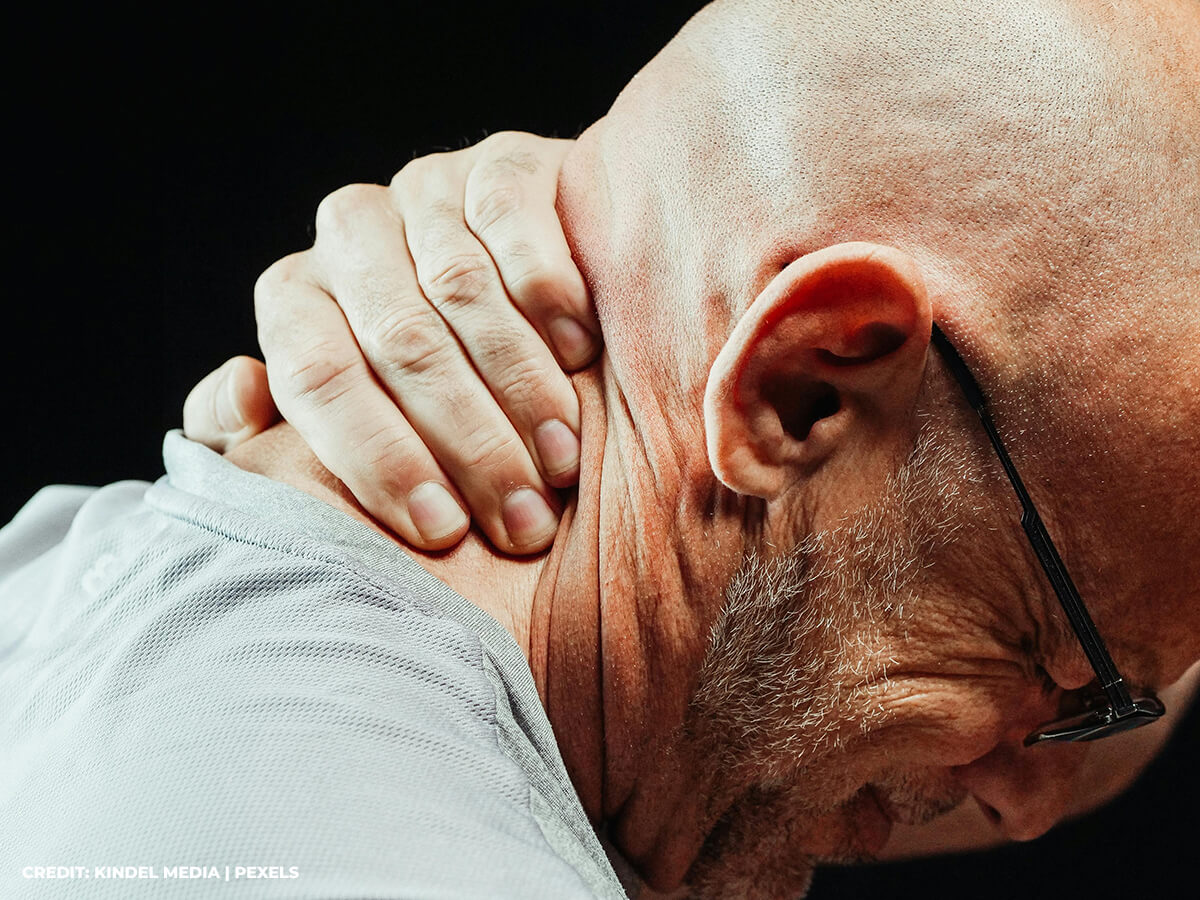The crisp, cold air of winter, while often beautiful and invigorating, can also bring with it a host of aches and pains. From stiff joints to sore muscles, winter’s chill can take a toll on our bodies, leaving us feeling sluggish and uncomfortable. But as the days lengthen and the promise of spring fills the air, it’s time to shake off the winter blues and prepare our bodies for the rejuvenating season ahead. Troubleshooting those winter aches now will ensure you step into spring feeling refreshed and ready to embrace all that the warmer months have to offer.

6 Common Causes of Winter Aches
Before we delve into troubleshooting, it’s crucial to understand why winter often exacerbates aches and pains. Several factors contribute to this phenomenon:
1. Reduced Activity Levels
The shorter days and colder temperatures often lead to decreased physical activity. We’re more likely to stay indoors, leading to muscle stiffness and reduced joint mobility.
2. Barometric Pressure Changes
Fluctuations in barometric pressure, common during winter storms, can affect joint fluid and trigger pain in individuals with arthritis or other joint conditions.
3. Vitamin D Deficiency
Sunlight, a primary source of vitamin D, is scarce during winter. Vitamin D plays a crucial role in bone health and muscle function, and a deficiency can lead to aches and pains.
4. Dehydration
We may not feel as thirsty in cold weather, but dehydration can still occur. Dehydrated muscles and joints are more prone to stiffness and pain.
5. Poor Posture
Hunching over to stay warm or spending prolonged periods indoors in less-than-ideal positions can strain muscles and lead to back and neck pain.
6. Increased Stress
The holiday season and general winter blues can increase stress levels, which can manifest as muscle tension and pain.
5 Common Winter Aches
1. Joint Pain
This manifests as stiffness and pain, particularly in weight-bearing joints like knees, hips, and ankles, as well as smaller joints in the hands and fingers. The cold can thicken synovial fluid, the lubricant in our joints, leading to increased friction and discomfort. Changes in barometric pressure, common during winter storms, can also exacerbate pain in individuals with arthritis, causing joints to swell and become more sensitive.
2. Muscle Stiffness
Reduced activity levels during winter lead to muscle tightness and decreased flexibility. The muscles in the neck, shoulders, and back are particularly susceptible, as we often hunch or tense these areas to stay warm. Prolonged periods of sitting or working in confined spaces can further contribute to muscle stiffness, leading to discomfort and limited range of motion.
3. Back Pain
Lower back pain is a frequent complaint during winter, often intensified by cold temperatures, poor posture, and muscle tension. The cold can cause muscles to contract, putting added strain on the spine. Additionally, the tendency to be less active can weaken core muscles, which are essential for supporting the back.
4. Headaches
Tension headaches are common during winter, triggered by stress, dehydration, and muscle tension. The shorter days and reduced sunlight can affect mood and increase stress levels, leading to headaches. Dehydration, often overlooked in cold weather, can also contribute to headaches. Tight muscles in the neck and shoulders can further exacerbate tension headaches.
5. Foot Pain
Cold feet and tight footwear are common culprits of foot pain during winter. Restricted blood flow due to cold temperatures can lead to numbness and tingling in the feet. Tight-fitting boots or shoes can compress the feet, leading to pain and discomfort, particularly for individuals with conditions like bunions or plantar fasciitis.

10 Troubleshooting Strategies
1. Stay Active
Regular exercise is crucial for maintaining joint mobility and muscle strength. Even moderate activity, such as walking, stretching, or yoga, can make a significant difference. Aim for at least 30 minutes of moderate-intensity exercise most days of the week. Indoor activities like swimming, stationary cycling, or dancing can be excellent options during cold weather. Consistency is key, even short periods of activity throughout the day can be beneficial.
2. Maintain Warmth
Dressing in layers is essential for regulating body temperature and protecting joints from the cold. Use thermal underwear, warm socks, and gloves to retain heat. Heating pads or warm compresses can provide targeted relief for sore muscles and joints. Warm baths or showers can also help relax tense muscles and improve circulation.
3. Stay Hydrated
Drink plenty of water throughout the day, even if you don’t feel thirsty. Dehydration can exacerbate muscle stiffness and joint pain. Warm beverages like herbal tea, broth, or warm water with lemon can help you stay hydrated and warm. Carry a water bottle with you and sip on it throughout the day.
4. Prioritize Vitamin D
Supplement with vitamin D, especially if you live in a region with limited sunlight during winter. Vitamin D plays a crucial role in bone health, muscle function, and immune system support. Consult with your doctor to determine the appropriate dosage and type of vitamin D supplement for your needs.
5. Practice Good Posture
Be mindful of your posture, especially when sitting or working at a desk. Use ergonomic chairs and keyboards to support your back and neck. Take frequent breaks to stretch and move around. Avoid slouching or hunching, as this can strain muscles and lead to pain.
6. Manage Stress
Practice stress-reduction techniques, such as meditation, deep breathing exercises, or yoga. Engage in activities you enjoy to boost your mood and reduce stress. Spending time in nature, even for short periods, can also be beneficial. Consider mindfulness apps or guided meditations to help you manage stress.
7. Stretch Regularly
Incorporate regular stretching into your routine to improve flexibility and reduce muscle stiffness. Focus on stretches that target common problem areas, such as the neck, shoulders, and back. Hold stretches for 20-30 seconds and repeat them several times. Warm up muscles before stretching to prevent injuries.
8. Maintain a Healthy Diet
A balanced diet rich in fruits, vegetables, and whole grains can support overall health and reduce inflammation. Focus on foods rich in omega-3 fatty acids, such as fish and flaxseed, which have anti-inflammatory properties. Limit processed foods, sugary drinks, and excessive alcohol consumption.
9. Prioritize Sleep
Adequate sleep is crucial for muscle recovery and pain management. Aim for 7-9 hours of quality sleep each night. Establish a regular sleep schedule and create a relaxing bedtime routine. Ensure your bedroom is dark, quiet, and cool.
10. Consider Professional Help
If your aches and pains are severe or persistent, seek professional help. A chiropractor, physical therapist, or massage therapist can provide targeted treatment and guidance. They can help identify the underlying causes of your pain and develop a personalized treatment plan.
How to Prepare for Spring
As spring approaches, take proactive steps to ensure your body is ready for the transition:
-
Gradually Increase Activity Levels
As the weather warms, gradually increase your activity levels. Start with short walks and gradually increase the duration and intensity of your workouts.
-
Embrace Outdoor Activities
Take advantage of the warmer weather and engage in outdoor activities, such as hiking, biking, or gardening.
-
Spring Cleaning for Your Body
Consider a gentle detox or cleanse to help your body eliminate toxins accumulated during winter.
-
Focus on Flexibility
Continue to prioritize stretching and flexibility exercises to maintain joint mobility and prevent injuries.
-
Maintain a Healthy Lifestyle
Continue to prioritize a healthy diet, adequate hydration, and stress management techniques.
The Role of Chiropractic Care in Alleviating Winter Aches
While lifestyle adjustments and home remedies can provide relief, chiropractic care offers a targeted approach to addressing musculoskeletal issues that often contribute to winter aches. Chiropractors are trained to diagnose and treat conditions affecting the spine, joints, and muscles, helping to restore proper alignment and function. Here’s how chiropractic care can help:
-
Spinal Alignment and Joint Mobility
Winter’s reduced activity and poor posture can lead to spinal misalignments and joint stiffness. Chiropractic adjustments can restore proper alignment, improve joint mobility, and reduce pain.
-
Muscle Tension Relief
What controls your muscles?
Your nervous system! Chiropractic works by releasing interference in your nervous system from misaligned joints (vertebral subluxations). This then means that your muscles are getting full voltage of power, and function better.
-
Pain Management
Chiropractic care provides a drug-free and non-invasive approach to pain management. By addressing the root cause of pain, chiropractors can help reduce reliance on pain medications.
-
Improved Nervous System Function
The spine plays a crucial role in the nervous system’s function. Correcting spinal misalignments can improve nerve function, which can positively impact overall health and well-being.
-
Personalized Treatment Plans
Chiropractors develop personalized treatment plans based on individual needs and conditions. This may include a combination of adjustments, exercises, stretches, and lifestyle recommendations.
-
Education and Prevention
Chiropractors educate patients on proper posture, ergonomics, and exercises to prevent future injuries and maintain musculoskeletal health. This empowers individuals to take an active role in their well-being.
-
Addressing Arthritis and Joint Conditions
Changes in barometric pressure can cause arthritic flare ups. Chiropractic adjustments can help to increase joint mobility and decrease pain associated with arthritis.
-
Increased Range of Motion
Joint stiffness is a common issue during winter. Chiropractic care can increase the range of motion in affected joints, leading to improved flexibility and reduced discomfort.
-
Reducing Inflammation
Certain chiropractic techniques can help to reduce inflammation in the body, which can contribute to pain relief.
By addressing the underlying musculoskeletal issues that contribute to winter aches, chiropractic care can help you feel better, move more freely, and prepare your body for the active months ahead.
If you’re experiencing persistent pain or discomfort, consider seeking professional help at Fairway Chiropractic Centre. Our experienced chiropractors can provide personalized care and help you achieve optimal musculoskeletal health. Contact us today to schedule an appointment and take the first step towards a pain-free spring.
Call us at 519-748-5535.











